Grace Elliot's Blog: 'Familiar Felines.' , page 23
June 13, 2012
A Local Legend - Smuggling
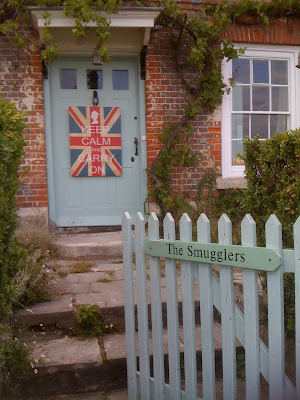 'The Smugglers' cottage, IOW, getting ready for the Diamond Jubilee!18th century smuggling - a world of danger, daring, hi-jinks and romance!
'The Smugglers' cottage, IOW, getting ready for the Diamond Jubilee!18th century smuggling - a world of danger, daring, hi-jinks and romance! This June, with the release of "Hope's Betrayal", welcome to a series of blog posts about the world of smuggling, including: press-ganged doctors, church hideouts, ghosts, tunnels, fake funerals, myths, pitfalls and more!
 Low tide in St Helens harbour- the shallow waters made it ideal for smugglers to navigate.The starting point on this journey is the Isle of Wight which is also the inspiration behind "Hope's Betrayal." I fell in love with the Islandabout ten years ago. In a strange quirk of fate for seven years I lived in Portsmouth, a twenty minute ferry ride away but without visiting. It took motherhood and two dinosaur mad sons both desperate to visit the newly opened "Dinosaur Isle" museum on the IOW (Isle of Wight) for us to go.
Low tide in St Helens harbour- the shallow waters made it ideal for smugglers to navigate.The starting point on this journey is the Isle of Wight which is also the inspiration behind "Hope's Betrayal." I fell in love with the Islandabout ten years ago. In a strange quirk of fate for seven years I lived in Portsmouth, a twenty minute ferry ride away but without visiting. It took motherhood and two dinosaur mad sons both desperate to visit the newly opened "Dinosaur Isle" museum on the IOW (Isle of Wight) for us to go.
 Dinosaur Isle Museum (shaped like a Pterosaur) Sandown, IOW.We stayed in a caravan park overlooking St Helens harbour and on a walk round the village I spotted a blue plaque on a fisherman's cottage. (In the UK places of special historical interest are marked with a 'blue plaque' giving brief details of who lived there.) Intrigued by the inscription about "The Lady of Chantilly" I visited the Newport Museum to do some research. The result was a fascinating true story of a humble fisherman's daughter, born around 1792, who was a part-time smuggler. This girl was so beautiful, that when caught her red-handed, the revenue officer couldn’t bring himself to arrest her. What a fabulous idea for a historical romance and out of this local legend, the idea behind "Hope's Betrayal" was born.
Dinosaur Isle Museum (shaped like a Pterosaur) Sandown, IOW.We stayed in a caravan park overlooking St Helens harbour and on a walk round the village I spotted a blue plaque on a fisherman's cottage. (In the UK places of special historical interest are marked with a 'blue plaque' giving brief details of who lived there.) Intrigued by the inscription about "The Lady of Chantilly" I visited the Newport Museum to do some research. The result was a fascinating true story of a humble fisherman's daughter, born around 1792, who was a part-time smuggler. This girl was so beautiful, that when caught her red-handed, the revenue officer couldn’t bring himself to arrest her. What a fabulous idea for a historical romance and out of this local legend, the idea behind "Hope's Betrayal" was born. 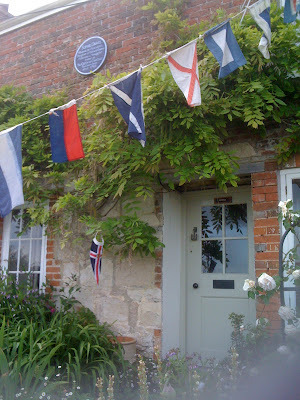 The blue plaque that inspired a novel! My story is a fictional account of two people on opposite sides of the law, falling desperately in love. How can such love survive if it means compromising everything they believe in? In a choice between betraying your family, or losing a career, what you chose?
The blue plaque that inspired a novel! My story is a fictional account of two people on opposite sides of the law, falling desperately in love. How can such love survive if it means compromising everything they believe in? In a choice between betraying your family, or losing a career, what you chose?I was on the Island during the recent Diamond Jubilee celebrations for Queen Elizabeth II and hope you enjoy the photos of some of the local cottages, decked out with bunting.
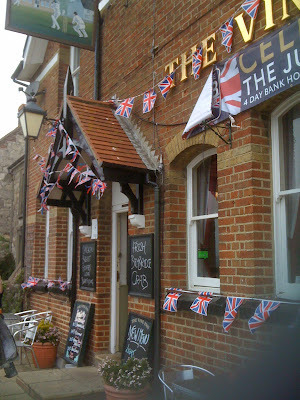 The local pub (overlooking the Village green) decked out with bunting.Next week: Smuggling - Women Smugglers.
The local pub (overlooking the Village green) decked out with bunting.Next week: Smuggling - Women Smugglers. 'Hope's Betrayal' - the story: One wild, winter's night two worlds collide. Known for his ruthless efficiency, Captain George Huntley is sent to stamp out smuggling on the south coast of England. On a night raid, the Captain captures a smuggler, but finds his troubles are just beginning when the lad turns out to be a lass, Hope Tyler. With Hope as bait, the Captain sets a trap to catch the rest of the gang. But in a battle of wills, with his reputation at stake, George Huntley starts to respect feisty, independent Hope. Challenged by her sea-green eyes and stubborn loyalty Huntley now faces a new threat - his growing attraction to a sworn enemy. But a love where either Hope betrays her own kind, or Captain Huntley is court-marshaled, is not an easy destiny to follow.
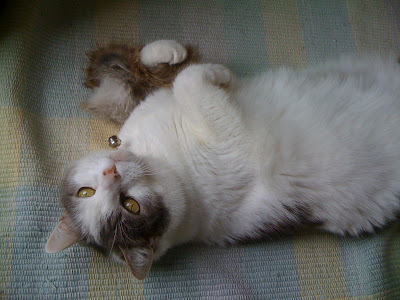 Widget relaxing whilst on holiday on the IOW.
Widget relaxing whilst on holiday on the IOW.
Published on June 13, 2012 02:42
June 10, 2012
Historical Dogs: Mysterious and Romantic - by Carola Dunn
Today I'm thrilled to welcome author Carola Dunn to the blog. Carola has an impressive back catalogue of books ranging from the regency novels that started her career in 1981, to the Daisy Dalrymple mysteries set in 1920's England and a new series of Cornish mysteries, set in the 1960's and 1970's. So without further ado, please welcome Carola!
Historical dogs--mysterious, romantic... by Carola DunnApart from a few years when I was first married and we kept moving from rental to rental, I've always had dogs in my life, from the German Shepherd, Wendell, who kept the District Nurse away from my pram to my present companion, Trillian (border collie, probably, with a bit of black Lab?). Is it any wonder that so many of my books have dogs who aren't merely present but are characters and often an important part of the plot? Trillian (A Hitch-Hikers Guide to the Universe reference? G)Nana (named after the dog in Peter Pan) enters my Daisy Dalrymple mystery series, set in England in the 1920s, in the seventh book, Styx and Stones. She's a farm-bred puppy of uncertain ancestry. At her first appearance, she's car-sick, hardly surprising considering the state of rural roads in 1923. However, she redeems herself in Mistletoe and Murder by finding a clue. Unfortunately, just as the police are about to examine it, she steals it back and runs off to rebury it. Dogs will be dogs.
Trillian (A Hitch-Hikers Guide to the Universe reference? G)Nana (named after the dog in Peter Pan) enters my Daisy Dalrymple mystery series, set in England in the 1920s, in the seventh book, Styx and Stones. She's a farm-bred puppy of uncertain ancestry. At her first appearance, she's car-sick, hardly surprising considering the state of rural roads in 1923. However, she redeems herself in Mistletoe and Murder by finding a clue. Unfortunately, just as the police are about to examine it, she steals it back and runs off to rebury it. Dogs will be dogs.
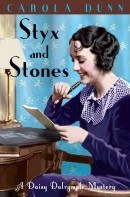 Nana's big moment comes in Black Ship, when she discovers a body in the bushes. She actually appears on the cover of the book—not looking at all as I'd imagined her. The cover now adorns the e-book edition, so I guess that's how she'll be for all eternity.
Nana's big moment comes in Black Ship, when she discovers a body in the bushes. She actually appears on the cover of the book—not looking at all as I'd imagined her. The cover now adorns the e-book edition, so I guess that's how she'll be for all eternity.
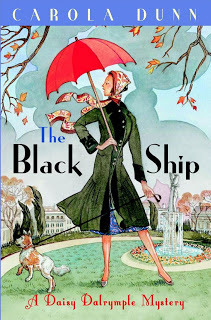 My other series, the Cornish Mysteries, set in 1970 or thereabouts, has a permanent resident West Highland Terrier, Teazle. She's modelled on my mother's last dog. So far she hasn't discovered any bodies, nor starred on a cover, but she goes everywhere with my sleuth, Eleanor Trewynn.
My other series, the Cornish Mysteries, set in 1970 or thereabouts, has a permanent resident West Highland Terrier, Teazle. She's modelled on my mother's last dog. So far she hasn't discovered any bodies, nor starred on a cover, but she goes everywhere with my sleuth, Eleanor Trewynn.
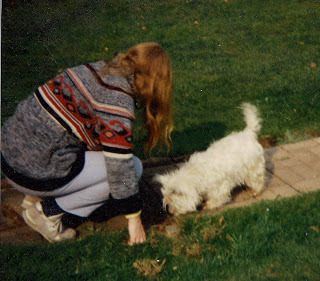 The author, Carola, with Candy.Before I started to write mysteries, I wrote a large number of Regencies. Needless to say, dogs were important in many of them. There was Osa, in Angel, who saved her master from drowning; Curly, in The Improper Governess, who not only had curly fur but kept a little boy warm by curling up with him for the night when he ran away from home; Ragamuffin, in the Tudor Signet; and in A Lord for Miss Larkin, large black Midnight and small snow-white Flake, Goose, and Drop.
The author, Carola, with Candy.Before I started to write mysteries, I wrote a large number of Regencies. Needless to say, dogs were important in many of them. There was Osa, in Angel, who saved her master from drowning; Curly, in The Improper Governess, who not only had curly fur but kept a little boy warm by curling up with him for the night when he ran away from home; Ragamuffin, in the Tudor Signet; and in A Lord for Miss Larkin, large black Midnight and small snow-white Flake, Goose, and Drop.
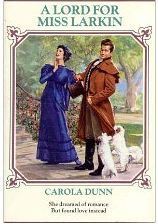 The only unpleasant canine character I ever created was Mudge, a pug, in Mayhem and Miranda. He was a beastly little biter, but he, too, had a major role to play. He not only saved his mistress from a kidnapper, he brought the hero and heroine together.I also wrote a dozen or so Regency novellas. Maera, large and shaggy, was a major character in A Conformable Wife, now in the e-collection A Second Spring.
The only unpleasant canine character I ever created was Mudge, a pug, in Mayhem and Miranda. He was a beastly little biter, but he, too, had a major role to play. He not only saved his mistress from a kidnapper, he brought the hero and heroine together.I also wrote a dozen or so Regency novellas. Maera, large and shaggy, was a major character in A Conformable Wife, now in the e-collection A Second Spring.
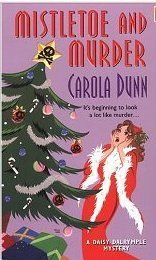 Given my predilection for dogs, my reaction when asked to write a novella about a kitten was predictable: Can't I make it a puppy? "No," said my editor. "Kittens sell." So Wooing Mariana(in My Dearest Valentine)* does indeed include a kitten, Pirate. Of course, I sneaked a puppy, Lyuba, into the story as well. Kittens do indeed "sell," especially in German translation!
Given my predilection for dogs, my reaction when asked to write a novella about a kitten was predictable: Can't I make it a puppy? "No," said my editor. "Kittens sell." So Wooing Mariana(in My Dearest Valentine)* does indeed include a kitten, Pirate. Of course, I sneaked a puppy, Lyuba, into the story as well. Kittens do indeed "sell," especially in German translation!
 (*Originally titled (by the publisher) A Kiss and a Kitten, in the anthology Snowflake Kittens.)
(*Originally titled (by the publisher) A Kiss and a Kitten, in the anthology Snowflake Kittens.)
 There was one other memorable feline, a kitten in The Road to Gretna. Lily was constantly getting into trouble, hardly surprising as she was taken on a days-long carriage trip by her equally troublesome young mistress. But I'm a dog-person, and now it's time to give Trillian and her visiting friend 'Oli their dinners.
There was one other memorable feline, a kitten in The Road to Gretna. Lily was constantly getting into trouble, hardly surprising as she was taken on a days-long carriage trip by her equally troublesome young mistress. But I'm a dog-person, and now it's time to give Trillian and her visiting friend 'Oli their dinners.
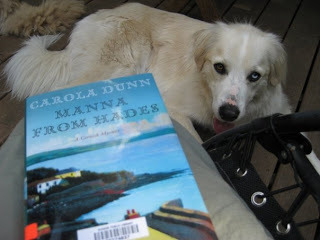 Trillian's visiting friend, Oli. Thank you Carola, for such an animal friendly post. As you may have gathered I have a bit of a bias towards cats, but as you saw the light with your kitten books, I'm sure we can agree to differ!If you would like to know more about Carola and her books please visit:http://www.CarolaDunn.weebly.comGrace x
Trillian's visiting friend, Oli. Thank you Carola, for such an animal friendly post. As you may have gathered I have a bit of a bias towards cats, but as you saw the light with your kitten books, I'm sure we can agree to differ!If you would like to know more about Carola and her books please visit:http://www.CarolaDunn.weebly.comGrace x
Historical dogs--mysterious, romantic... by Carola DunnApart from a few years when I was first married and we kept moving from rental to rental, I've always had dogs in my life, from the German Shepherd, Wendell, who kept the District Nurse away from my pram to my present companion, Trillian (border collie, probably, with a bit of black Lab?). Is it any wonder that so many of my books have dogs who aren't merely present but are characters and often an important part of the plot?
 Trillian (A Hitch-Hikers Guide to the Universe reference? G)Nana (named after the dog in Peter Pan) enters my Daisy Dalrymple mystery series, set in England in the 1920s, in the seventh book, Styx and Stones. She's a farm-bred puppy of uncertain ancestry. At her first appearance, she's car-sick, hardly surprising considering the state of rural roads in 1923. However, she redeems herself in Mistletoe and Murder by finding a clue. Unfortunately, just as the police are about to examine it, she steals it back and runs off to rebury it. Dogs will be dogs.
Trillian (A Hitch-Hikers Guide to the Universe reference? G)Nana (named after the dog in Peter Pan) enters my Daisy Dalrymple mystery series, set in England in the 1920s, in the seventh book, Styx and Stones. She's a farm-bred puppy of uncertain ancestry. At her first appearance, she's car-sick, hardly surprising considering the state of rural roads in 1923. However, she redeems herself in Mistletoe and Murder by finding a clue. Unfortunately, just as the police are about to examine it, she steals it back and runs off to rebury it. Dogs will be dogs.
 Nana's big moment comes in Black Ship, when she discovers a body in the bushes. She actually appears on the cover of the book—not looking at all as I'd imagined her. The cover now adorns the e-book edition, so I guess that's how she'll be for all eternity.
Nana's big moment comes in Black Ship, when she discovers a body in the bushes. She actually appears on the cover of the book—not looking at all as I'd imagined her. The cover now adorns the e-book edition, so I guess that's how she'll be for all eternity.
 My other series, the Cornish Mysteries, set in 1970 or thereabouts, has a permanent resident West Highland Terrier, Teazle. She's modelled on my mother's last dog. So far she hasn't discovered any bodies, nor starred on a cover, but she goes everywhere with my sleuth, Eleanor Trewynn.
My other series, the Cornish Mysteries, set in 1970 or thereabouts, has a permanent resident West Highland Terrier, Teazle. She's modelled on my mother's last dog. So far she hasn't discovered any bodies, nor starred on a cover, but she goes everywhere with my sleuth, Eleanor Trewynn.
 The author, Carola, with Candy.Before I started to write mysteries, I wrote a large number of Regencies. Needless to say, dogs were important in many of them. There was Osa, in Angel, who saved her master from drowning; Curly, in The Improper Governess, who not only had curly fur but kept a little boy warm by curling up with him for the night when he ran away from home; Ragamuffin, in the Tudor Signet; and in A Lord for Miss Larkin, large black Midnight and small snow-white Flake, Goose, and Drop.
The author, Carola, with Candy.Before I started to write mysteries, I wrote a large number of Regencies. Needless to say, dogs were important in many of them. There was Osa, in Angel, who saved her master from drowning; Curly, in The Improper Governess, who not only had curly fur but kept a little boy warm by curling up with him for the night when he ran away from home; Ragamuffin, in the Tudor Signet; and in A Lord for Miss Larkin, large black Midnight and small snow-white Flake, Goose, and Drop.
 The only unpleasant canine character I ever created was Mudge, a pug, in Mayhem and Miranda. He was a beastly little biter, but he, too, had a major role to play. He not only saved his mistress from a kidnapper, he brought the hero and heroine together.I also wrote a dozen or so Regency novellas. Maera, large and shaggy, was a major character in A Conformable Wife, now in the e-collection A Second Spring.
The only unpleasant canine character I ever created was Mudge, a pug, in Mayhem and Miranda. He was a beastly little biter, but he, too, had a major role to play. He not only saved his mistress from a kidnapper, he brought the hero and heroine together.I also wrote a dozen or so Regency novellas. Maera, large and shaggy, was a major character in A Conformable Wife, now in the e-collection A Second Spring.
 Given my predilection for dogs, my reaction when asked to write a novella about a kitten was predictable: Can't I make it a puppy? "No," said my editor. "Kittens sell." So Wooing Mariana(in My Dearest Valentine)* does indeed include a kitten, Pirate. Of course, I sneaked a puppy, Lyuba, into the story as well. Kittens do indeed "sell," especially in German translation!
Given my predilection for dogs, my reaction when asked to write a novella about a kitten was predictable: Can't I make it a puppy? "No," said my editor. "Kittens sell." So Wooing Mariana(in My Dearest Valentine)* does indeed include a kitten, Pirate. Of course, I sneaked a puppy, Lyuba, into the story as well. Kittens do indeed "sell," especially in German translation!
 (*Originally titled (by the publisher) A Kiss and a Kitten, in the anthology Snowflake Kittens.)
(*Originally titled (by the publisher) A Kiss and a Kitten, in the anthology Snowflake Kittens.)
 There was one other memorable feline, a kitten in The Road to Gretna. Lily was constantly getting into trouble, hardly surprising as she was taken on a days-long carriage trip by her equally troublesome young mistress. But I'm a dog-person, and now it's time to give Trillian and her visiting friend 'Oli their dinners.
There was one other memorable feline, a kitten in The Road to Gretna. Lily was constantly getting into trouble, hardly surprising as she was taken on a days-long carriage trip by her equally troublesome young mistress. But I'm a dog-person, and now it's time to give Trillian and her visiting friend 'Oli their dinners.
 Trillian's visiting friend, Oli. Thank you Carola, for such an animal friendly post. As you may have gathered I have a bit of a bias towards cats, but as you saw the light with your kitten books, I'm sure we can agree to differ!If you would like to know more about Carola and her books please visit:http://www.CarolaDunn.weebly.comGrace x
Trillian's visiting friend, Oli. Thank you Carola, for such an animal friendly post. As you may have gathered I have a bit of a bias towards cats, but as you saw the light with your kitten books, I'm sure we can agree to differ!If you would like to know more about Carola and her books please visit:http://www.CarolaDunn.weebly.comGrace x
Published on June 10, 2012 05:25
June 6, 2012
Mouse-Skin Eyebrows - A Short History of Makeup.

The modern beauty is not afraid to wear false eyelashes, but how would she feel about adding mouse-skin eyebrows?
This is not such an odd question as it sounds, because as we discovered in earlier posts, lead-based makeup had several unwanted effects on the skin, which included making hair fall out. Whilst this could be of benefit for a hirsute top lip, it's not so great when fashion in the 17th century demanded bold black eyebrows. "All the ladies have…snowy foreheads and bosoms, jet eye-brows and scarlet lips." Lady Mary Wortley Montagu, 1716, describing fashionable ladies at the theatre.
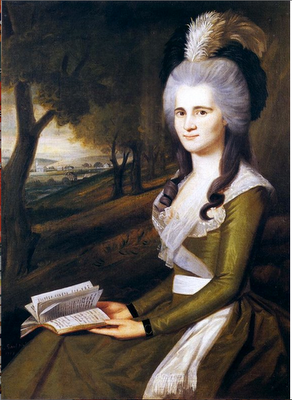 Ester Boardman - 1780 - who wore mouse-skin eyebrows.
Ester Boardman - 1780 - who wore mouse-skin eyebrows.
One way round this was to use black-lead to paint on a defined brow, and the other was to trim a glossy mouse pelt into shape and glue it to the forehead! It seems ladies were quite philosophical about setting mouse traps to provide a fresh, glossy pelt for the next day.
On little things, as sages write, Depends our human joy or sorrow, If we don’t catch a mouse tonight, Alas! No eyebrows for tomorrow.
Unfortunately these glued on brows had a habit of coming unstuck, and many a grand society lady had trouble keeping her dignity whilst covertly trying to reposition a wayward eyebrow that had slipped out of place. The poet Matthew Prior wrote in 1718:
Helen was just slip into bed Her eyebrows on the toilet lay Away the kitten with them fled As fees belonging to her prey.
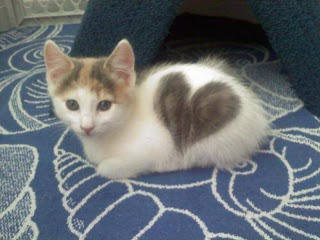
Of course, there is nothing quite so beautiful as a smile that reveals a lovely set of white teeth, but when oral hygiene was poor and teeth frequently fell out (lead makeup again!) or were black with decay, this wasn’t easy. One solution was false teeth - hippo ivory was very popular as it was a good colour match to human teeth! And for those whose cheeks had sunk in, there was always 'plumpers'. These were defined in the Fop Dictionary, 1690 as: "Made of cork…very thin, round and light balls to plump out and fill up the cavities of the cheek." Heaven knows how anyone managed to talk whilst keeping plumpers and hippo-false teeth in place!
Another artificial adornment to beauty was the use of patches. The Romans first used patches in emulation of the goddess, Venus. She was reputated to have a beauty spot, the one lovely touch of darkness that highlighted her otherwise perfect complexion. In Englandthe idea caught on in the late 16th century and persisted well into the 18th. Beauty spots were make of black silk, velvet or fine leather and glued to specific parts of the face to highlight certain qualities. For instance a coquette would wear it by the corner of her mouth, a flirt by the corner of her eye, whilst a gallant as a dimple in the middle of the cheek. However, some people had no choice since they used patches to cover scars and pimples. There were others who became addicted to patches and wore far too many, giving the appearance of being covered by a swarm of flies! A hamster trying out cheek plumpers.
A hamster trying out cheek plumpers.
And finally, there were those who used patches used to denote political allegiance: Politically minded dames used their patches as party symbols: the Whigs patching on the right, and the Tories on the left side of their faces, while those who were neutral, decorated both cheeks. The Spectator 1711.

The modern beauty is not afraid to wear false eyelashes, but how would she feel about adding mouse-skin eyebrows?
This is not such an odd question as it sounds, because as we discovered in earlier posts, lead-based makeup had several unwanted effects on the skin, which included making hair fall out. Whilst this could be of benefit for a hirsute top lip, it's not so great when fashion in the 17th century demanded bold black eyebrows. "All the ladies have…snowy foreheads and bosoms, jet eye-brows and scarlet lips." Lady Mary Wortley Montagu, 1716, describing fashionable ladies at the theatre.
 Ester Boardman - 1780 - who wore mouse-skin eyebrows.
Ester Boardman - 1780 - who wore mouse-skin eyebrows.One way round this was to use black-lead to paint on a defined brow, and the other was to trim a glossy mouse pelt into shape and glue it to the forehead! It seems ladies were quite philosophical about setting mouse traps to provide a fresh, glossy pelt for the next day.
On little things, as sages write, Depends our human joy or sorrow, If we don’t catch a mouse tonight, Alas! No eyebrows for tomorrow.
Unfortunately these glued on brows had a habit of coming unstuck, and many a grand society lady had trouble keeping her dignity whilst covertly trying to reposition a wayward eyebrow that had slipped out of place. The poet Matthew Prior wrote in 1718:
Helen was just slip into bed Her eyebrows on the toilet lay Away the kitten with them fled As fees belonging to her prey.

Of course, there is nothing quite so beautiful as a smile that reveals a lovely set of white teeth, but when oral hygiene was poor and teeth frequently fell out (lead makeup again!) or were black with decay, this wasn’t easy. One solution was false teeth - hippo ivory was very popular as it was a good colour match to human teeth! And for those whose cheeks had sunk in, there was always 'plumpers'. These were defined in the Fop Dictionary, 1690 as: "Made of cork…very thin, round and light balls to plump out and fill up the cavities of the cheek." Heaven knows how anyone managed to talk whilst keeping plumpers and hippo-false teeth in place!

Another artificial adornment to beauty was the use of patches. The Romans first used patches in emulation of the goddess, Venus. She was reputated to have a beauty spot, the one lovely touch of darkness that highlighted her otherwise perfect complexion. In Englandthe idea caught on in the late 16th century and persisted well into the 18th. Beauty spots were make of black silk, velvet or fine leather and glued to specific parts of the face to highlight certain qualities. For instance a coquette would wear it by the corner of her mouth, a flirt by the corner of her eye, whilst a gallant as a dimple in the middle of the cheek. However, some people had no choice since they used patches to cover scars and pimples. There were others who became addicted to patches and wore far too many, giving the appearance of being covered by a swarm of flies!
 A hamster trying out cheek plumpers.
A hamster trying out cheek plumpers.And finally, there were those who used patches used to denote political allegiance: Politically minded dames used their patches as party symbols: the Whigs patching on the right, and the Tories on the left side of their faces, while those who were neutral, decorated both cheeks. The Spectator 1711.
Published on June 06, 2012 03:09
May 30, 2012
DEATHLY PALE - A Short History of MakeUp.
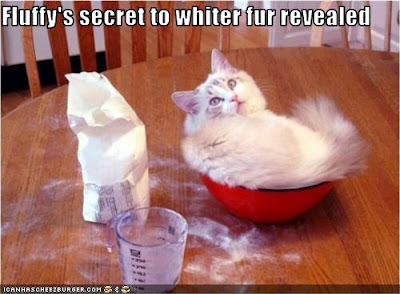
What woman wouldn’t want perfect, luminous skin, free from blemishes and wrinkles? But at what price? Queen Elizabeth I applied to her skin a concoction of finely ground white lead powder blended with vinegar to achieve such an effect - and the small fact that lead is a deadly toxin did not deter her (Sounds reminiscent of Botox doesn’t it?) Part of the pressure on Elizabethto look beautiful was that she needed the political power that dangling marriage alliance in front of foreign kingdoms gave her, so she had to appear fresh long after her beauty had started to fade. The trouble was the whilst her 'peint' or white lead makeup gave the illusion of a flawless complexion, it was actually eating away at her skin, leaving the surfaced pocked and scarred and the only solution was a yet thicker layer of makeup.
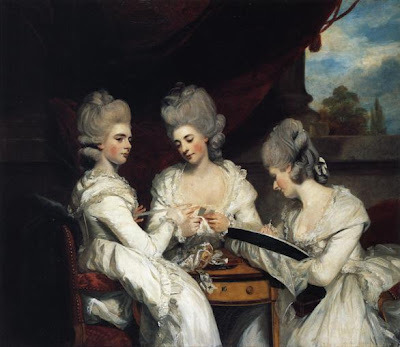 The Ladies Waldegrave - 1781 - showing the fashion for skin as white as their gowns. In fairness to Elizabeth, there was a fair amount of naivety about the effects of lead. A little over half a century later, in 1661, a paper was presented at the Royal Society by Sir Robert Moray in which he was quite candid about the illness suffered by workers making lead makeup. They suffered from stomach cramps, dizziness, severe headaches and even blindness, brought on my the fumes of lead during the manufacturing process. But despite his observations no link was made between these symptoms and the product being dangerous to apply it to large areas of skin.
The Ladies Waldegrave - 1781 - showing the fashion for skin as white as their gowns. In fairness to Elizabeth, there was a fair amount of naivety about the effects of lead. A little over half a century later, in 1661, a paper was presented at the Royal Society by Sir Robert Moray in which he was quite candid about the illness suffered by workers making lead makeup. They suffered from stomach cramps, dizziness, severe headaches and even blindness, brought on my the fumes of lead during the manufacturing process. But despite his observations no link was made between these symptoms and the product being dangerous to apply it to large areas of skin.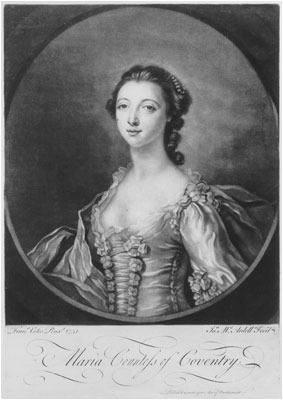 Lady Coventry - who died because of cosmetics. Almost a century after this, in 1755, a correspondent in the "Gentleman's Magazine" warned that women should be wary of beauty's deception because the makeup had "the most nauseous taste imaginable" and smelt vile. Incredibly, it seems no one linked swollen gums, tooth and hair loss, tremors and headaches to the wearing of lead makeup…until the death of Lady Coventry in 1760. At her debut in 1751, Maria Gunning, who married and became Lady Coventry, was haled as a famous beauty. Her husband disapproved of her wearing makeup and reputedly chased her round the dining room at a dinner party, to scrub her face clean with a napkin. However, her wishes prevailed and she was never seen without makeup - with the tragic result that she sickened, and in 1760 died a slow, agonising death of lead poisoning.
Lady Coventry - who died because of cosmetics. Almost a century after this, in 1755, a correspondent in the "Gentleman's Magazine" warned that women should be wary of beauty's deception because the makeup had "the most nauseous taste imaginable" and smelt vile. Incredibly, it seems no one linked swollen gums, tooth and hair loss, tremors and headaches to the wearing of lead makeup…until the death of Lady Coventry in 1760. At her debut in 1751, Maria Gunning, who married and became Lady Coventry, was haled as a famous beauty. Her husband disapproved of her wearing makeup and reputedly chased her round the dining room at a dinner party, to scrub her face clean with a napkin. However, her wishes prevailed and she was never seen without makeup - with the tragic result that she sickened, and in 1760 died a slow, agonising death of lead poisoning.  Elizabeth, Duchess of Hamilton (Maria's sister) - who survived her makeup.
Elizabeth, Duchess of Hamilton (Maria's sister) - who survived her makeup. Maria's sister, Elizabeth, who became Lady Hamilton, also suffered severe illness but survived - albeit with ruined looks. But denial seemed the order of the day, as Horace Walpole wrote is 1766, "that pretty young woman, Lady Fortrose, is at the point of death…killed like Lady Coventry and others by white lead, of which nothing could break her." So if the threat of horrible illness didn’t stop the use of lead makeup - what did? The answer lies in the late 18th century and revolutionary France. The fashion set by French Aristocrats for heavy makeup became a symbol of their decadence and was decreed a capital offence. The more stubborn aristocrats showed defiance to the end, wearing their 'maquillage' on the way to the guillotine- whilst those who wished to escape notice when without! A new fashion craze started - a la'Anglaise- modelled on country living and freshness, and so the days of heavy makeup were numbered.
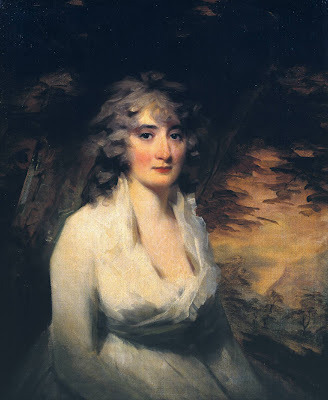 Mrs Lauzun 1795 - showing a more natural look.
Mrs Lauzun 1795 - showing a more natural look. Next week:Mouse-skin eyebrows - the quirky side of cosmetics!
Published on May 30, 2012 04:15
May 23, 2012
COUNTERFEITING and PAINTING - A Short History of Makeup.
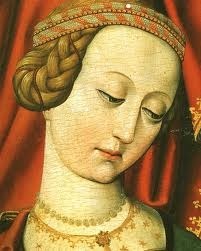
Did you know in 12th century, there was a fashion for women to pluck all their hair back to the crown of the head, to give a bald, egg-shaped silhouette to their face? A high, elegant forehead, devoid of eyebrows or hair was considered highly attractive because it left the face delicate, vulnerable and pious looking. Chaucer describes one such beauty in his translation of 'Romaunt of the Rose.'
"Her yellow hair, her lily-white brow…using no peynte [paint]."
In this short series of blog posts, we look at the changing face of beauty and cosmetics. From early Christianity until well into the 15th century the use of cosmetics was frowned upon as 'giving entry to the devil'. In 'The Book of the Knight of La Tour' 1371, a moral tale is recounted of a woman who spends so long at her mirror that she is late for church.
"As she looked in a mirror, instead of the mirror, the devil turned to her his arse [!] which was so foul and horrible that for fear she was sick."
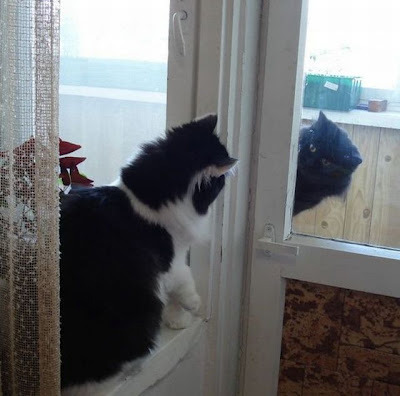 Cat-Mirror prank photo courtesy of ROFLzoo.com The author, Geoffrey De La Tour Landry, goes on to write how when a lady 'plucked from her brows and forehead to have away the hair' in order to make herself 'the fairer and pleasing to the world' her vanity gave the devil a chance to enter her soul.
Cat-Mirror prank photo courtesy of ROFLzoo.com The author, Geoffrey De La Tour Landry, goes on to write how when a lady 'plucked from her brows and forehead to have away the hair' in order to make herself 'the fairer and pleasing to the world' her vanity gave the devil a chance to enter her soul."In every hole that her hair hath been plucked out…the devil [enters] a burning needle into the brain."
This aversion to prettifying was because trying to improve what god had created was an implied criticism of his skill and a mark of ingratitude. It was feared that on judgement day god would refuse to recognise those that had altered his work with make-up. (An additional and unfortunate off shoot of this attitude was that people thought god marked out sinners with ugliness and deformity.)
 Mary Tudor (Elizabeth's predecessor) with her severe looks.Attitudes to makeup gradually changed during the Renaissance, with new opinions on beauty, especially in Italymaking the use of 'complexion improvers' and 'tints' more widely accepted. In England, things also changed when Queen Elizabeth I came to the throne. When Elizabeth I was crowned in 1559, her ivory complexion looked young and virginal and she also wished to emphasise she was her father's (Henry VIII) child, so displayed her golden red hair. She needed to dissociate herself from her mother, Anne Boleyn, who had been accused of being a witch and Elizabethadopted the view:
Mary Tudor (Elizabeth's predecessor) with her severe looks.Attitudes to makeup gradually changed during the Renaissance, with new opinions on beauty, especially in Italymaking the use of 'complexion improvers' and 'tints' more widely accepted. In England, things also changed when Queen Elizabeth I came to the throne. When Elizabeth I was crowned in 1559, her ivory complexion looked young and virginal and she also wished to emphasise she was her father's (Henry VIII) child, so displayed her golden red hair. She needed to dissociate herself from her mother, Anne Boleyn, who had been accused of being a witch and Elizabethadopted the view:"Beauty springs from god…and so one cannot have beauty without goodness." Castiglione
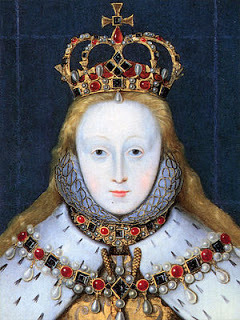 Elizabeth I in her coronation robes, emphasising her pale, virginal skin.
Elizabeth I in her coronation robes, emphasising her pale, virginal skin.And if that meant giving beauty a helping hand with cosmetics, then so be it. In short, Elizabethset out to make herself an icon in order to inspire the devotion and allegiance of her subjects. She needed to create the impression of being more than a 'weak and feeble woman' - but against the costume of her huge and richly jewelled gowns her face ran the risk of becoming lost. Even though the church still held cosmetics to be bad:
"A woman, through painting and dying her face, sheweth herself to be more than whorish. For she hath corrupted and defaced the workmanship of god on her."Philip Stubbes 1585
Elizabeth's response, just as her father had before her, was to set herself above the church. It is possible that a bout of smallpox in 1562 left her complexion scarred and started her obsession with make-up, specifically a blend of finely ground lead powder, mixed with vinegar and applied to give a luminous, finish that blended away imperfections.
 As her youth ebbed, Elizabeth relied on lead based make-up to enhance her skin.
As her youth ebbed, Elizabeth relied on lead based make-up to enhance her skin.Of course anything the queen did, would be copied by her courtiers and soon a fashion for makeup gripped those who wanted to appear fashionable. Elizabeth also used rouge to highlight her cheeks; red ochre to give a brownish red, or red mercuric sulphide to give brighter shades. Her lips were accented with a pencil of ground alabaster mixed with cochineal, mixed in a wax paste, formed into sticks and dried in the sun - the forerunner of modern lipsticks!
Unfortunately, the lead used in Elizabeth's base, was highly toxic and ironically one of the side effects was pitting and scarring of the skin. The only remedy was to apply another, thicker coat of the toxic substance…

....and so the subject of next week's post is "Dying for Fashion" - a look at those who died as a result of using make up.
Published on May 23, 2012 03:09
May 20, 2012
The SYMBOLISM OF GLOVES - by Deborah Swift.
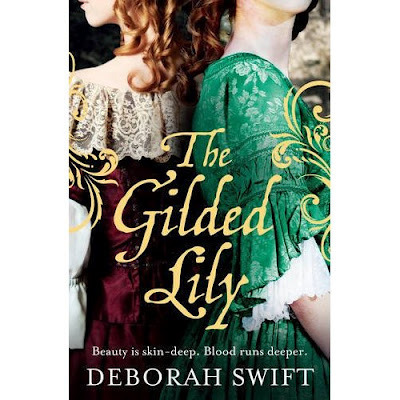
Today I'm thrilled to welcome author, Deborah Swift, to my blog. Deborah writes highly acclaimed historical fiction - "The Lady's Slipper" is currently rated 5 stars on Amazon - and Deborah has kindly taken the time to visit and post on the subject of: 'The Symbolism of Gloves.'
Welcome, Deborah!
In The Gilded Lily, Jay Whitgift, the dashing but dangerous man-about-town, gives Ella, my feisty maid, a pair of gloves. As I researched the sort of gloves that Ella might have worn I re-connected with the idea that gloves often had a symbolic meaning. Their unmistakable form, and their manner of taking on an individual’s body shape so that they appear to be part of the person even when they’re off, must be why they have attained such social and psychological significance. And this is why I chose them as an intimate gift.
Gloves were made mostly of leather, suede or kidskin, which would stretch to fit the hand. Black ones were worn at funerals, and those attending would be expected to wear them. Relatives of the deceased would often supply black gloves for the poorer members of the congregation for fear of the shame of un-gloved mourners.Yellow was worn for hunting and blood-sports, and white at balls or social occasions, and for the aristocracy who could afford servants to keep them clean. Hands dressed in with pale kid gloves looked manifestly unacquainted with work, and this was desirable for the upper classes.In the 16th and 17th century women would go to bed wearing gloves filled with marigold cream to whiten and soften their hands. Glovers often scented their gloves - common perfumes were cinnamon or cloves, but the most costly gloves were scented with musk, civet, ambergris, and spirit of roses.
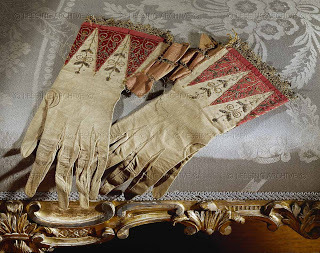 Click for link.Queen Elizabeth I's gloves.Eighteenth-century Irish "chickenskin" gloves were even thinner and smoother than kid. They were cut from the skins of aborted calves, and so fine that they came folded into the shell of a walnut. Margaret Visser – The Way We Are.(Not sure I like that idea, it sounds very grim! )
Click for link.Queen Elizabeth I's gloves.Eighteenth-century Irish "chickenskin" gloves were even thinner and smoother than kid. They were cut from the skins of aborted calves, and so fine that they came folded into the shell of a walnut. Margaret Visser – The Way We Are.(Not sure I like that idea, it sounds very grim! )As with a handshake, gloves meant faith in the transaction or confidence in the person, so transactions of land or property could be made by handing over the symbol of a glove.The tradition of “throwing down the gauntlet”, has survived in language at least, where a knight might challenge another to a duel by casting a glove at his feet – the glove being a symbol of hand to hand combat. And Judges often used to wear gloves as a symbol that their hands were unsullied by the criminals they had jurisdiction over. Gloves "lined" with money were famous as formal bribes and judges and other high up members of society often received far too many pairs of gloves to use them all; for this reason, many fine specimens survive. These are often highly decorative, with gold braid, embroidery and sumptuous beading, as in this example. The poorer gloves, such as the ones Ella is given, that would be worn for warmth, rarely survive.
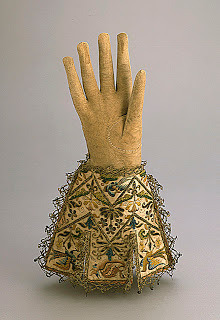 Early 17th century glove (Courtesy of V&A)In the 16th and 17thcenturies so much etiquette developed around them that men’s gloves in particular grew wider and more decorative as they were so often carried rather than worn. It was taboo to offer to shake a hand wearing gloves, or to accept a gift in a glove. Nor was it acceptable to remove them with the teeth. Approaching an altar in Church, men had to remove their gloves, and the right glove had to be removed when coming into the presence of a social superior as a mark of respect. The keeping on of your gloves indicated that you retained power by declining physical contact, whereas the removal meant you deferred to a higher position. Gloves were also to be put off when playing cards (to deter cheating, I suppose) or when eating.
Early 17th century glove (Courtesy of V&A)In the 16th and 17thcenturies so much etiquette developed around them that men’s gloves in particular grew wider and more decorative as they were so often carried rather than worn. It was taboo to offer to shake a hand wearing gloves, or to accept a gift in a glove. Nor was it acceptable to remove them with the teeth. Approaching an altar in Church, men had to remove their gloves, and the right glove had to be removed when coming into the presence of a social superior as a mark of respect. The keeping on of your gloves indicated that you retained power by declining physical contact, whereas the removal meant you deferred to a higher position. Gloves were also to be put off when playing cards (to deter cheating, I suppose) or when eating. From the symbolic use of gloves the custom grew up of presenting them to people of distinction on special occasions. When Queen Elizabeth visited Cambridge in 1578 the vice chancellor offered her a
" a paire of gloves, perfumed and garnished with embroiderie and goldsmithe's wourke, price 60s."
Up until quite recently women always carried matching handbags and gloves, a style now only seen as a remnant at weddings, or with the royal family who, as befitting their perceived status, keep on their gloves in public. I love this Vogue pattern, which still incorporates gloves as an essential part of “the look”.
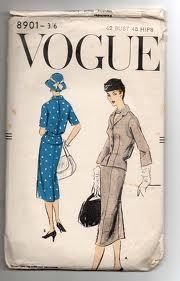 Click for link
Click for linkIn The Gilded Lily, Ella is delighted by her new gloves, which her sister Sadie dismisses scornfully as “trumpery”. The Gilded Lily will be out in September, my other book The Lady’s Slipper (still ranked 5 stars on Amazon!) is out now.
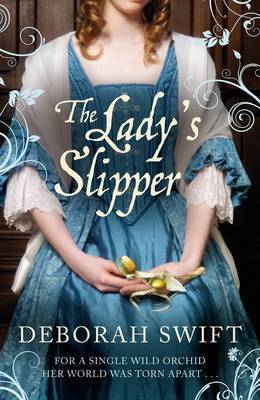 Click for link.‘fabulous …her characters are so real that they linger in the mind long after the book is back on the shelf. Highly recommended.' Historical Novels Review
Click for link.‘fabulous …her characters are so real that they linger in the mind long after the book is back on the shelf. Highly recommended.' Historical Novels ReviewThanks to Grace for hosting me. More information about the history of gloves can be found at http://www.goleathergloves.com/history-of-gloves.htmDeborah’s blog: www.deborahswift.blogspot.comTwitter @swiftstory
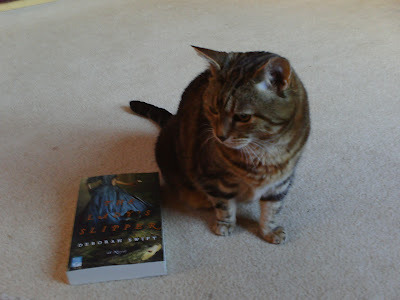 Deborah's cat, Tabby - obviously an intelligent cat with excellent taste!
Deborah's cat, Tabby - obviously an intelligent cat with excellent taste!
Published on May 20, 2012 01:45
May 16, 2012
DEATH ON THE WALLS - Poison in Victorian Britain
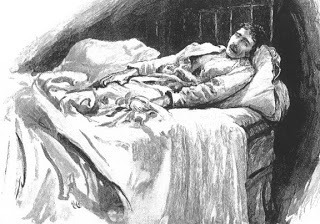
Wallpaper as a murder weapon? Poisoned in your sleep? This week's post recounts how a fashion for green could kill! “A great deal of slow poisoning is going on in Great Britain.”Dr William Hinds 1857 In the 1850’s oil lamps, with their brighter light, replaced candles as the main source of household illumination, and so walls no longer needed to be pale reflective colours. Dark shades became fashionable and of these, there was a passion for Scheele’s Green and Schweinfurt Green. Anyone who was 'on trende' had to have a ‘green room,’ and manufacturers estimated that in 1858 there were an estimated 100 million squares miles of green wallpaper in Britain alone. Unfortunately, what people failed to realize was that their prized wallpaper was coloured with arsenic, and very likely poisoning them.
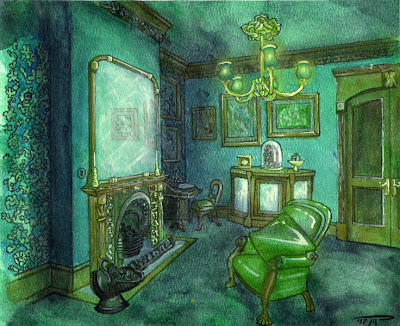 A fashionable green room. There first hint of trouble was recorded in the Limehouse district of London, in 1862. First one child, then a second, and tragically a third, died with symptoms similar to diphtheria. However an inspection of their home by the Medical Health Officer was of another opinion – he noted the green wallpaper in the children’s bedroom. After tests it became clear that the painful, constricted throats that ailed the children were not due to diphtheria, but arsenic found in the Scheele’s green wallpaper.
A fashionable green room. There first hint of trouble was recorded in the Limehouse district of London, in 1862. First one child, then a second, and tragically a third, died with symptoms similar to diphtheria. However an inspection of their home by the Medical Health Officer was of another opinion – he noted the green wallpaper in the children’s bedroom. After tests it became clear that the painful, constricted throats that ailed the children were not due to diphtheria, but arsenic found in the Scheele’s green wallpaper.
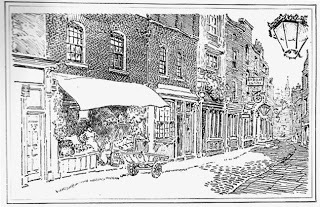 Limehouse, London, in 1899. A correspondence on the subject of arsenical wallpapers took place in The Times newspaper. One respondent, signing himself ‘A. Sufferer’ wrote that when he told his decorator that he was distributing poison, the man:
Limehouse, London, in 1899. A correspondence on the subject of arsenical wallpapers took place in The Times newspaper. One respondent, signing himself ‘A. Sufferer’ wrote that when he told his decorator that he was distributing poison, the man: “…denied the possibility of ill resulting and offered to eat a pound of paper.”
However the paper manufacturers had a lot to lose, and with much the same attitude as tobacco manufacturers’ in the 1960’s, decided to deny the evidence, saying things such as:
“Look, I can rub it [wallpaper] hard, I can lick it [wallpaper] a dozen times with my hand and nothing comes off.”
Their defence was that good quality wallpapers didn’t shed arsenical dust and so couldn’t be poisoning people. It took until the 1890’s for science to show that arsenical vapour (not just solid arsenic) was deadly. To make matters worse, the Victorian remedy for illness was to be confined to a room and avoid cold air. This meant that people suffering with headaches, fatigue, chest complaints and nauseau (all symptoms of arsenical poisoning) were likely to take to their beds in a green bedroom with the windows tight shut against draughts and thus :
“Breath air loaded with the breathe of death.”
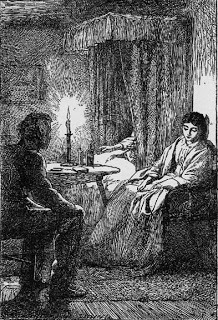 A typical Victorian sick room scene. As stories spread people became more suspicious of that their décor was making them ill. When one lady sickened, and her pet cat’s fur fell out, she swapped rooms with her maid and she made a full recovery…whilst the maid took sick. It didn’t take long for infamous green wallpaper to appear in fiction…as a murder weapon.
A typical Victorian sick room scene. As stories spread people became more suspicious of that their décor was making them ill. When one lady sickened, and her pet cat’s fur fell out, she swapped rooms with her maid and she made a full recovery…whilst the maid took sick. It didn’t take long for infamous green wallpaper to appear in fiction…as a murder weapon.In ‘Chambers Journal of Popular Literature, Science and Arts’ a story was published about the orphan, Sir Frederick Staunton. Now Freddie’s guardian, his Uncle, wished the boy harm so that he could inherit, and sent his ward to stay with the local vicar. His instructions were to give the boy the best room in the house, a room decorated with a wallpaper of a: “..rich, deep, emerald hue.” Apparently the room was cursed by a monk in the time of Henry VIII,
“Several deaths had occurred in the green chamber in particular, for the most part blooming girls who had faded and pined under ‘the curse’ until their dim eyes had looked their last at the emerald-tinted walls.”
Fortunately for a sickening Freddie, a visiting physician spotted the true cause of the boy’s ill health and all ended happily.
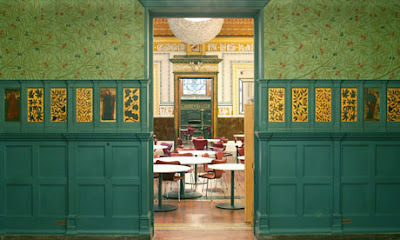 A Victorian green dining room - (courtesy of the Guardian.com) Unhappily, arsenic wasn’t just present in green wallpaper, but also in blue, pink, yellow, brown, gray and white. In 1870’s America, the Michigan Board of Health assembled books of samples of arsenical wallpaper, called ‘Shadows from the Walls of Death’ to be circulated to every state library and increase awareness of this silent danger. Even so, it Queen Victoriawas seemingly unaware of the danger when in 1879 she abraided a guest for being late for his audience. His defence was that he had slept poorly because of the green wallpaper in his bedroom. Astonished to learn of the dangers of arsenical papers the Queen had every bit of wallpaper stripped out of Buckingham Palace.
A Victorian green dining room - (courtesy of the Guardian.com) Unhappily, arsenic wasn’t just present in green wallpaper, but also in blue, pink, yellow, brown, gray and white. In 1870’s America, the Michigan Board of Health assembled books of samples of arsenical wallpaper, called ‘Shadows from the Walls of Death’ to be circulated to every state library and increase awareness of this silent danger. Even so, it Queen Victoriawas seemingly unaware of the danger when in 1879 she abraided a guest for being late for his audience. His defence was that he had slept poorly because of the green wallpaper in his bedroom. Astonished to learn of the dangers of arsenical papers the Queen had every bit of wallpaper stripped out of Buckingham Palace.
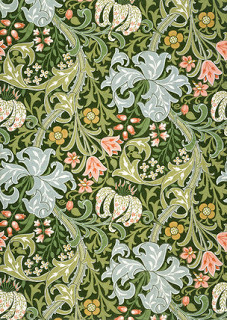 A typical Willam Morris design - courtesy of V&A museum.
A typical Willam Morris design - courtesy of V&A museum.Not everyone was so easily convinced. The famous artist and designer, William Morris, only removed green arsenic pigments from his wallpapers under protest, writing in 1885:
“….it is hardly possible to imagine….a greater folly…than the arsenic scare.”
Eventually in the 1870’s it was public fear of poisoning that saw the decline in fashion for green. Some manufacturers’ tried to forestall this by printing ‘Free From Arsenic’ on the back of their papers. This backfired since when tests were run on these ‘arsenic free’ papers, they were found to contain very high levels indeed. Public confidence never recovered and green walls went out of fashion!
 Sometimes it's easy to ignore the obvious.....
Sometimes it's easy to ignore the obvious.....
Published on May 16, 2012 01:24
May 9, 2012
CORPSE CANDLES - Poison in Victorian Britain.
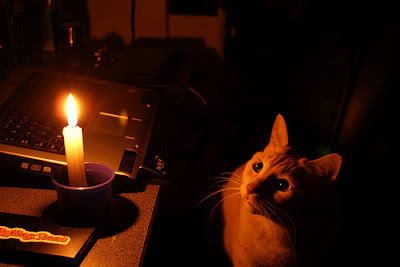
"An abominable smell like garlic."
So far in this series we've discovered that poison surrounded the Victorians: in their food, medicines…and even in the candles that lit their homes! This week our story starts on a summer's evening in 1837 when Mr. Everitt, preparing to retire for the night, blew out his candle. Mr Everitt, who just happened to be a professor of chemistry, became alarmed by the scent of garlic - which he knew to be the characteristic smell given off by heated arsenic. The next day Everitt went to his laboratory where he determined that the smouldering candle did indeed give off arsenical vapours. Everitt's candle was one of a variety of 'composition candles', newly available on the British market. These candles had the advantage of burning like high quality wax (as opposed to tallow) but at a fraction of the price. What's even more interesting is that these candles originated from France - where they were banned!
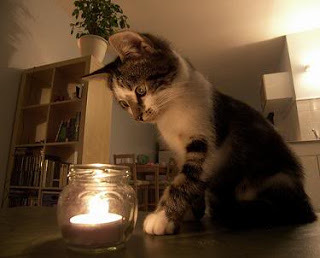
In 1810 the French scientist, Michel Chevreul, found a way of separating cheap tallow (beef or mutton fat) into solid and liquid components. The solid part he called 'stearine' and had a higher melting point that crude tallow, which made it more desirable for candles. But stearine was more brittle and less glossy than wax, so Parisian manufacturers hit on a secret additive that when poured into the moulds corrected these problems. The nature of this additive was a closely guarded secret, kept from the public. But in 1834 the French authorities got wind that arsenic was the magic ingredient - and prohibited all future manufacture.
"Every trace of arsenicated candles was obliterated from the capital of France."
But meanwhile, French candle makers sold the secret to their London counterparts and for two years, 1835 - 6, stearine-arsenic candles lit British homes, oblivious to the danger until one evening Professor Everitt smelt garlic. Everitt made his findings public and alarming notices were posted:
"Death in the candle…. may with propriety be called - Corpse Candles." The Lancet.
Undesirable as inhaling arsenic may be, it seems perhaps these claims were a little exaggerated. Clinical trials where birds were exposed to burning composition candles demonstrated small finches in a distressed state and then died after several hours, but of larger mammals such as guinea pigs and rabbits, none died.
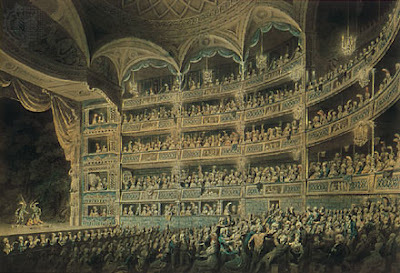 The Theatre Royal, Drury Lane.But the report written by the medical committee put forward this question:
The Theatre Royal, Drury Lane.But the report written by the medical committee put forward this question:"Let us suppose,…that London's Theatre Royal, Drury Lane, whose chandeliers held 152 tapers…were to be lighted with stearine candles…In that case 608 grains of arsenious acid would be vaporised and floating in the air during the time of the performance. Is anyone prepared to assert that not one of the individuals present ..would not receive the slightest injury?"
In other words - why take the risk? Especially since it was also found that the addition of a harmless ingredient, chalk, had the same beneficial effects against brittleness, as arsenic! And finally, in 1859 another chemist reported the smell of garlic from his candle. However, in this case the cause was the green pigment colouring the wax, Scheele's green. At this time there was a craze for green in home furnishings and …you guessed it…Scheele's green owed it's vivid pigment to the presence of arsenic (more of this next week.)

Published on May 09, 2012 02:06
May 2, 2012
DOCTOR DEATH - Poison in Victorian Britain.

In Victorian Britain, if you couldn't trust your loved ones or the food you eat not to poison you, then who could you trust? Sadly, the answer did not include physicians, who frequently employed poison as medicine! In the 19th century medicines generally fell into one of two categories: the useless, and the downright harmful. But far from this seeming a negligent attitude, doctors worked within the bounds of the knowledge that existed at that time. Prior to the development of 'germ theory' in the 1880's, physicians had no understanding of what caused infectious disease (ie bacteria and viruses) and therefore could not target the root cause (kill the micro-organism.) Instead treatment relied on bedside observations of the effect of medications on the progression of symptoms.

Take this example from the august medical journal, The Lancet (still a leading publication for the UKmedical professional.)
"An old woman confined to her chair by rheumatism had a quarrel with her servant girl…the girl struck back by putting arsenic in the woman's tea…the woman drank only a little before getting sick…after recovering from the poison she found her rheumatism was relieved…the accidental arsenic had apparently cured her." The Lancet.
The idea that a poison could have beneficial properties was nothing new, but just a matter of finding the correct dose.
"Within… this weak flower, poison hath residence and medicine power"Romeo and Juliet.

Disease, it was hypothesised, was the alteration of the balance of humours within the body; thus any treatment that induced vomiting or diarrhoea, was credited with purging the ill humour and restoring balance, hence the importance of purges and laxatives. And perhaps it wont surprise you to read that the most successful emetics contained poison. It was a Staffordshire physician, Thomas Fowler, who in 1786 turned the using arsenic as medicine, into a science. He published a book of his research (or rather observations!) titled, "Medical Reports of the Effects of Arsenic", in which he agreed strongly for the use of arsenic in sick people. One such case study was a lady suffering from asthma. The patient went from, "Being in a state of constant breathlessness, incapable of the slight exertion," to near normal activity. Another asthmatic, who struggled to climb a single flight of steps, after treatment was able, "To go from the bottom steps in the Crystal Palace, right off up to the top, without the slightest embarrassment and much to her own astonishment."
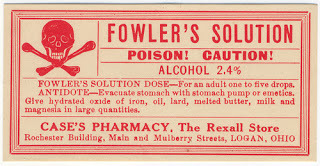
Interestingly, the medicine used for asthma was often delivered in cigarettes (the smoke inhaled into the lungs where the effect was desired) and the special tobacco often had a plant product, stramonium added. Stramonium contains atropine, an alkaloid which acts on bronchiles to dilate them…and ease breathing. Fowler was so convincing, and ever with an eye to safety (!) he had a remedy professionally approved. It was a mineral solution 'liquor arsenicalis' with a touch of lavender added to give it a distinctive flavour and stop people drinking it as water. This solution became known as 'Fowler's Solution.' It became widely used against anaemia, diabetes, heart palpations, worms, syphilis, tuberculosis, rickets, rabies, menstrual irregularities and morning sickness!
"In arsenic we have…a perfect prophylactic in most infectious diseases."
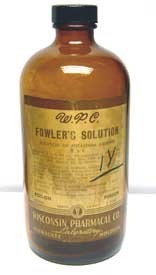
In the 1840's, arsenic was discovered in the spa waters at Bath, which in the mind set of the day, offered a possible explanation for the beneficial effect of spa therapy. And finally, you may be relieved that not all doctors were convinced that the benefits of arsenic outweighed the risk of poisoning. "A large section of the profession repudiate arsenic altogether…hurling invectives against the temerity and recklessness of the doctors who prescribe it." All this, set against those physicians who insisted that Fowler's solution was invaluable and would, "Sacrifice nine-tenths of the Materia Medicia for arsenic."
If you were a sick in Victorian times, how hard to know who to believe!

Published on May 02, 2012 03:12
April 25, 2012
DEATH IN THE POT - Poison in Victorian Britain.
 In this week's post about poison in Victorian Britain, we look at the hidden dangers in food. We start with the chilling tale of the sweet-shop owner, Joseph Neal, and his peppermint drops.
In this week's post about poison in Victorian Britain, we look at the hidden dangers in food. We start with the chilling tale of the sweet-shop owner, Joseph Neal, and his peppermint drops.
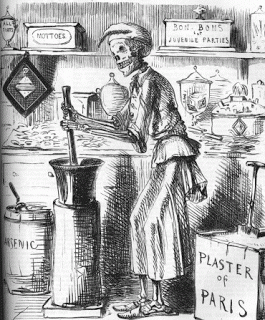 Punch parody of sweet making in Victorian Britain.
Punch parody of sweet making in Victorian Britain.One Monday in October, 1858, Mr Neal sent his assistant to buy a quantity of plaster of Paris from the druggist. The reason? It was much cheaper than sugar and could be used as 'daft' or an inexpensive substitute to bulk up sweets. The assistant called on the chemist, who sent his apprentice to the cellar, where he weighed out twelve pounds of daft. Unfortunately, the new assistant measured out and mistakenly sold him the wrong white powder - arsenic. This deadly poison was taken back to the sweet shop where it was incorporated into peppermint drops - which killed twelve people and made over a hundred seriously ill.
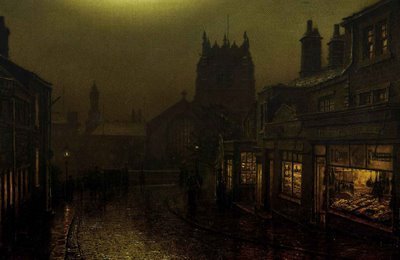 Victorian Bradford - where Joseph Neal had his sweet shop.But how did the chemist's apprentice get confused? The poison was labelled "Arsenic" but on the base of barrel. Also, the 'Sale of Arsenic Act' required the poison to be coloured before leaving the shop, but took no account of tubs of arsenic in storerooms waiting to be dispensed.
Victorian Bradford - where Joseph Neal had his sweet shop.But how did the chemist's apprentice get confused? The poison was labelled "Arsenic" but on the base of barrel. Also, the 'Sale of Arsenic Act' required the poison to be coloured before leaving the shop, but took no account of tubs of arsenic in storerooms waiting to be dispensed. 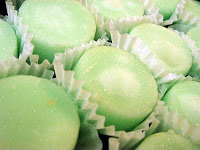 Peppermint creams.The nub of the peppermint problem was substituting ingredients to increase profit, but this was nothing new. (A medieval test for sugar in beer was to sit a man in leather breeches on a stool covered in beer. When the ale dried, if the man stuck to the seat, the brewer was guilty of adulteration.) More seriously, it was not unusual to brighten sweets with the addition of red lead glaze, or copper to tinned pickles.
Peppermint creams.The nub of the peppermint problem was substituting ingredients to increase profit, but this was nothing new. (A medieval test for sugar in beer was to sit a man in leather breeches on a stool covered in beer. When the ale dried, if the man stuck to the seat, the brewer was guilty of adulteration.) More seriously, it was not unusual to brighten sweets with the addition of red lead glaze, or copper to tinned pickles. It was said that merchants were so driven by money that:
"the possible sacrifice of even a fellow creature's life is a secondary consideration."
In the 1820's the German chemist, Friedrich Accum took on a person crusade to stop food adulteration, the practice being so widespread:"There is death in the pot."
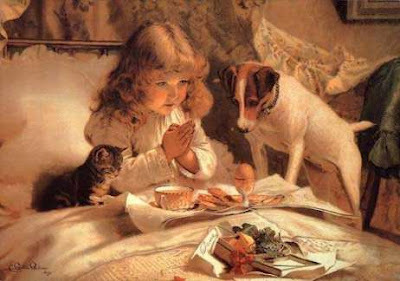 Even bread and cheese commonly contained adulterants.
Even bread and cheese commonly contained adulterants.Even before Accum, in the 1790's an article in The Tatler warns about a:
"Fraternity of chemical operators, who work undergrounds…hidden from view…transmuting base ingredients [sub standard wine]…into the choicest products of the hills and valleys of France."
They did this by adding alum (to brighten colour) gypsum (to remove cloudiness) and sugar of lead (to counteract acidity). Not only that, but they often used bottles bought from pedlars who in turn had bought them from druggists who had previously used them to store arsenic!
Interestingly, one victim of adulterated wine was Francis Blandy (see Part One), when he partook of tainted wine in the Red Lion, Henley. His two drinking companions died; whilst he survived (He was later poisoned by his daughter who thought she was giving him 'forgiveness powder.')
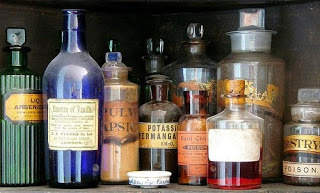 And finally.
And finally.You would have expected the Victorian parliament to bring in rigorous laws, prohibiting the use of food adulteration - but not a bit of it! On the one side a public outcry led to an anti-adulteration bill being put before the House of Commons in 1857, but it was voted down, as was a similar bill in 1859. Oratory denounced the legislation as interference, that it:
"Treated the people of this country like children"
In other words, people could make their own decisions about what they bought and if might harm them - much like fast food today?
"Soon government would have such power as even to lay down the proportion of water a man might put in his grog."
Echoes of rebellion against the modern 'Nanny' state?
 Additives? What additives?
Additives? What additives?
Published on April 25, 2012 03:18
'Familiar Felines.'
Following on from last weeks Halloween posting, today's blog post looks at the unwanted image of cats as the witches familiar - from the Norse Goddess Freya to lonely women in the middle ages.
The full Following on from last weeks Halloween posting, today's blog post looks at the unwanted image of cats as the witches familiar - from the Norse Goddess Freya to lonely women in the middle ages.
The full post can found at:
http://graceelliot-author.blogspot.com
...more
The full Following on from last weeks Halloween posting, today's blog post looks at the unwanted image of cats as the witches familiar - from the Norse Goddess Freya to lonely women in the middle ages.
The full post can found at:
http://graceelliot-author.blogspot.com
...more
- Grace Elliot's profile
- 156 followers



